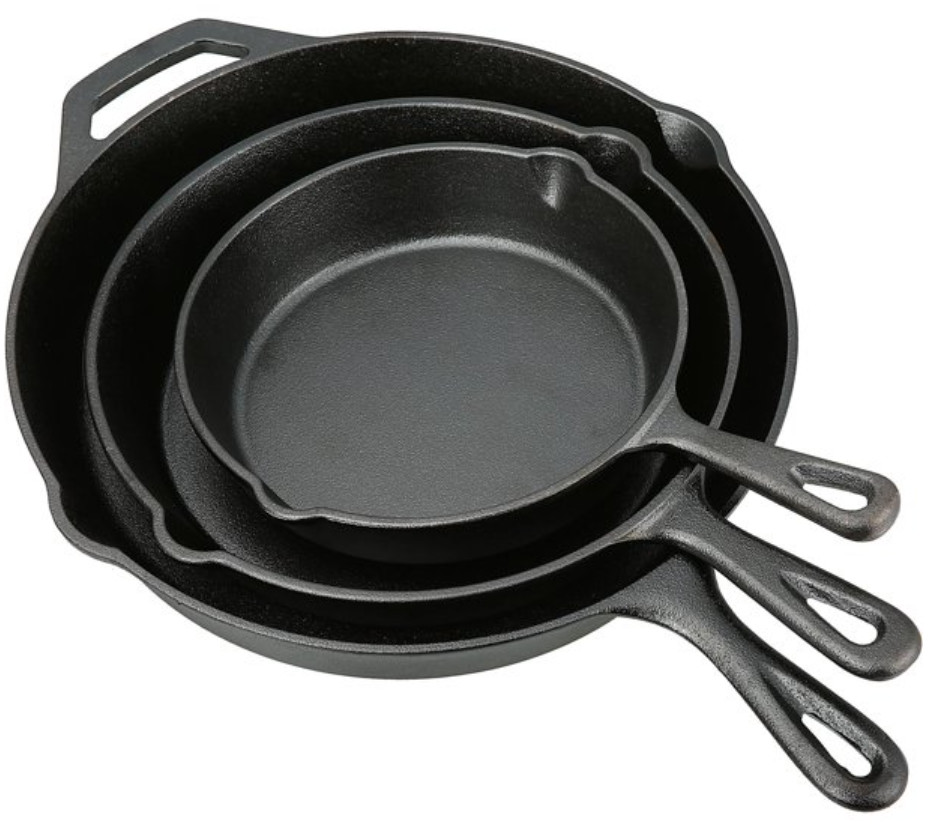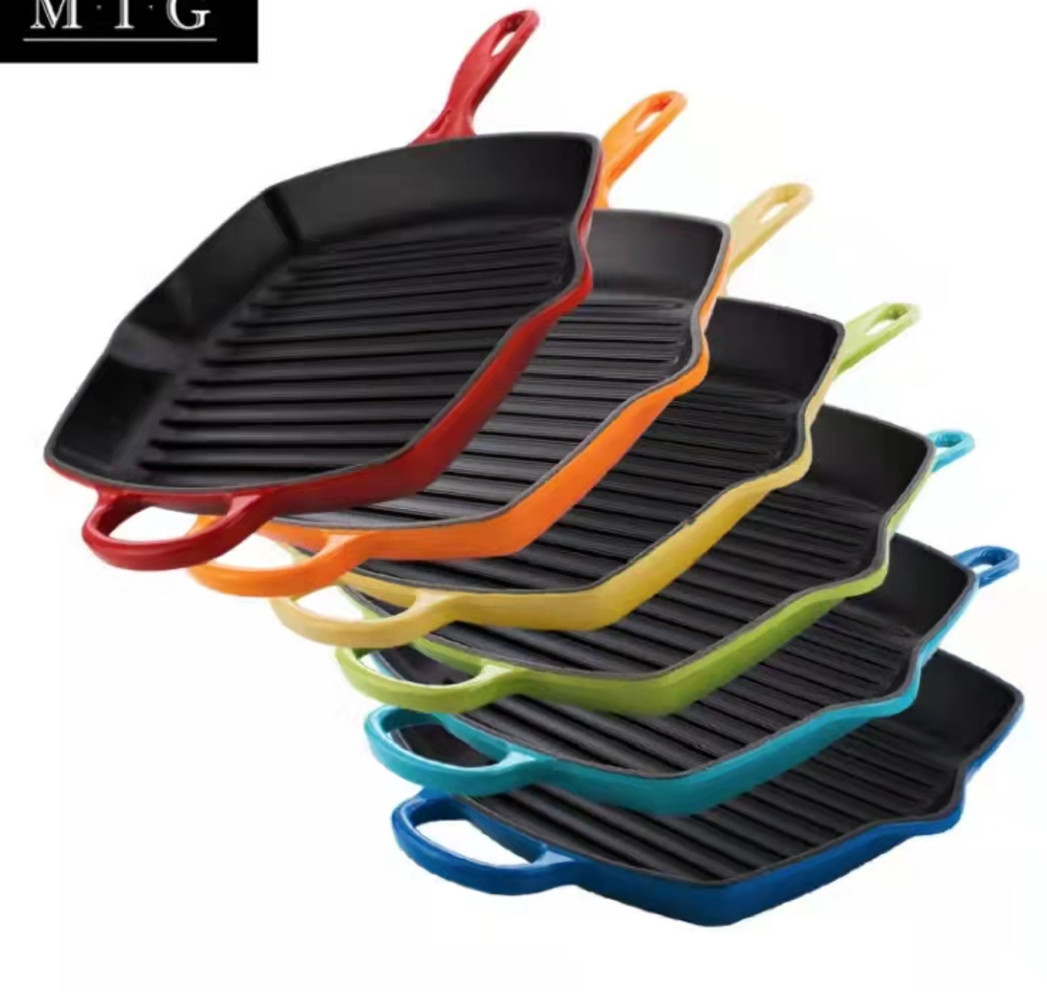- 150m ka boroa, Tsela ea DingWei Bophirimela, Motse oa Nanlou, Toropo ea Changan, Sebaka sa GaoCheng, Shijiazhuang, Hebei, China
- monica@foundryasia.com
Jun. 12, 2023 18:48 Khutlela lethathamong
KE ENG E LATSANG TŠEPE COOKWARE
Lisebelisoa tsa tšepe tse entsoeng ka tšepe ke eng:
Cast iron cookware ke li-cookware tse boima tse entsoeng ka tšepe e entsoeng ka tšepe e bohlokoa bakeng sa ho boloka mocheso, ho tšoarella nako e telele, bokhoni ba ho sebelisoa ha mocheso o le holimo haholo, le ho pheha ntle le lithupa ha li lokisitsoe hantle.
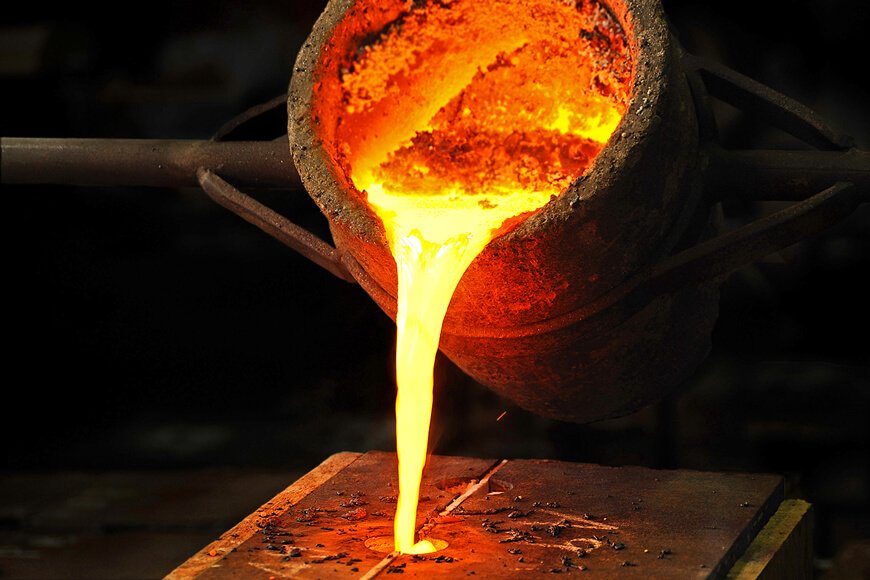
Histori ea lijana tsa tšepe tse entsoeng ka tšepe
In Asia, particularly China, India, Korea and Japan, there is a long history of cooking with cast iron vessels. The first mention of a cast-iron kettle in English appeared in 679 or 680, though this wasn't the first use of metal vessels for cooking. The term pot came into use in 1180. Both terms referred to a vessel capable of withstanding the direct heat of a fire. Cast-iron cauldrons and cooking pots were valued as kitchen items for their durability and their ability to retain heat evenly, thus improving the quality of cooked meals.
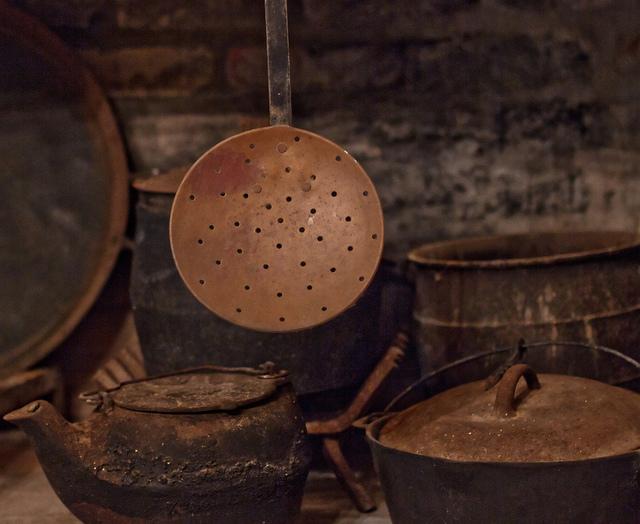
Europe le United States, pele ho sebelisoa setofo sa kichineng bohareng ba lekholo la bo19 la lilemo, lijo li ne li phehoa ka leifong, ’me lipitsa le lipane li ne li etselitsoe ho sebelisoa leifong, kapa ho fanyehoa ka har’a lona.
Cast-iron pots were made with handles to allow them to be hung over a fire, or with legs so that they could stand in the coals. In addition to Dutch ovens with three or four feet, which Abraham Darby I secured a patent in 1708 to produce, a commonly used cast-iron cooking pan called a spider had a handle and three legs allowing it to stand upright over campfires as well as in the coals and ashes of a fireplace.
Lipitsa tsa ho pheha le lipane tse se nang maoto, tse sephara, li ile tsa qala ho sebelisoa ha litofo li qala ho ratoa; nako ena ea qetellong ea lekholo la bo19 la lilemo e ile ea bona ho hlahisoa ha folete
cast-iron skillet.
Li-cookware tse entsoeng ka tšepe li ne li tumme ka ho khetheha har'a beng ba matlo nakong ea halofo ea pele ea lekholo la bo20 la lilemo. E ne e le sejana sa ho pheha, empa se tšoarella nako e telele. Malapa a mangata a Amerika a ne a e-na le bonyane pane e le 'ngoe ea ho pheha ka tšepe.
Lekholong la bo20 la lilemo ho ile ha boela ha e-ba le selelekela le ho ata ha li-cookware tsa tšepe tse koahetsoeng ka enamel.
Today, of the large selection of cookware that can be purchased from kitchen suppliers, cast iron comprises only a small fraction. However, the durability and reliability of cast iron as a cooking tool has ensured its survival. Cast-iron pots and pans from the 19th and 20th century continue to see daily use to the present day. They are also highly sought after by antique collectors and dealers. Cast iron has also seen a resurgence of its popularity in specialty markets. Through cooking shows, celebrity chefs have brought renewed attention to traditional cooking methods, especially the use of cast iron.
Lihlahisoa tsa bohlokoa
Mefuta ea lijana tsa tšepe tse entsoeng ka tšepe e kenyelletsa lipane tse halikang, lionto tsa Madache, li-griddles, li-waffle irons, panini press, deep fryers, woks, fondu le potjies.
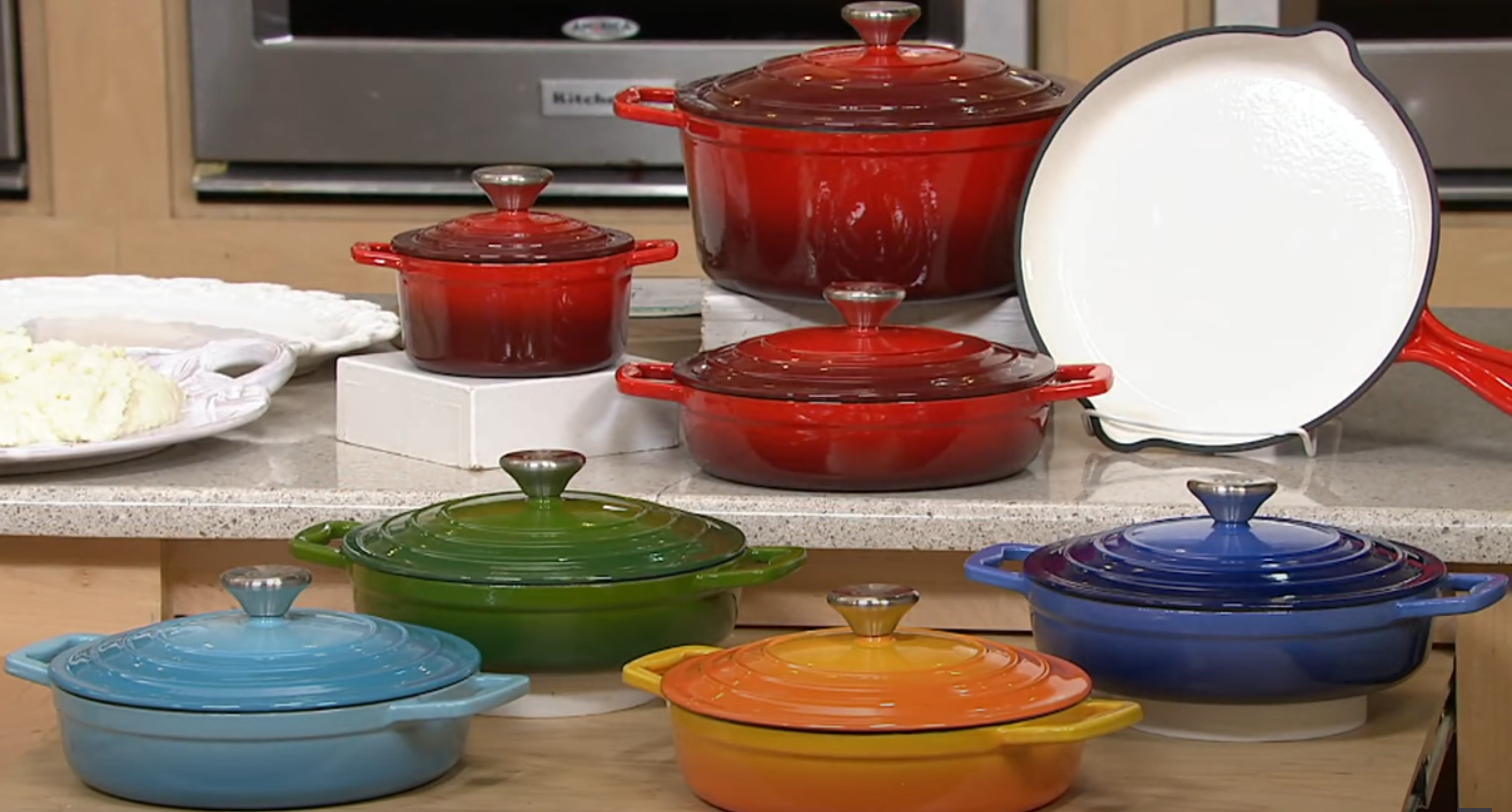
Melemo ea lijana tsa tšepe tse entsoeng ka tšepe
Cast iron's ability to withstand and maintain very high cooking temperatures makes it a common choice for searing or frying, and its excellent heat retention makes it a good option for long-cooking stews or braised dishes.
Because cast-iron skillets can develop a "non-stick" surface when cared for properly, they are excellent for frying potatoes or preparing stir-fries. Some cooks consider cast iron a good choice for egg dishes, while others feel the iron adds an off-flavor to eggs. Other uses of cast-iron pans include baking, for instance for making cornbread, cobblers and cakes.
Many recipes call for the use of a cast-iron skillet or pot, especially so that the dish can be initially seared or fried on the stovetop then transferred into the oven, pan and all, to finish baking. Likewise, cast-iron skillets can double as baking dishes. This differs from many other cooking pots, which have varying components that may be damaged by the excessive temperatures of 400 °F (204 °C) or more.
-
Product introduction of Changan Cast Iron Co., LTD
LitabaJan.24,2024
-
The Impact of the Leidenfrost Effect on Non-Stick Properties of Cast Iron Titanium Coated Cookware
LitabaJan.24,2024
-
Ho hlahloba karohano ea Culinary——Cast Iron Casseroles vs Regular Casseroles
LitabaJan.03,2024
-
Sephutheloana sa Liphutheloana se Hlophisitsoe bocha ka Shelving le 3D Storage ea Thepa
LitabaDec.29,2023
-
Ho hloekisa pitsa ea enamel ea tšepe e sebelisitsoeng ho ka etsoa ka katleho ka mehato e latelang:
LitabaDec.27,2023
-
Sebopeho sa Metallographic bakeng sa enamel holim'a tšepe e entsoeng ka tšepe
LitabaDec.27,2023
